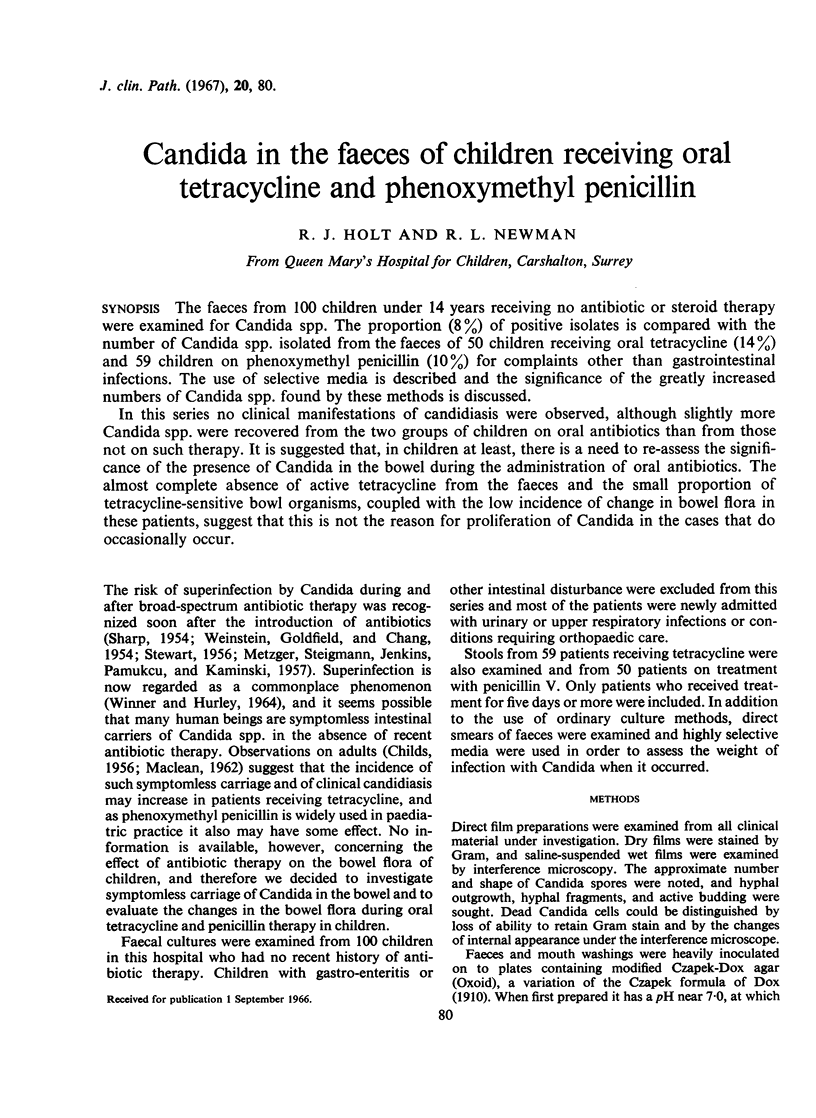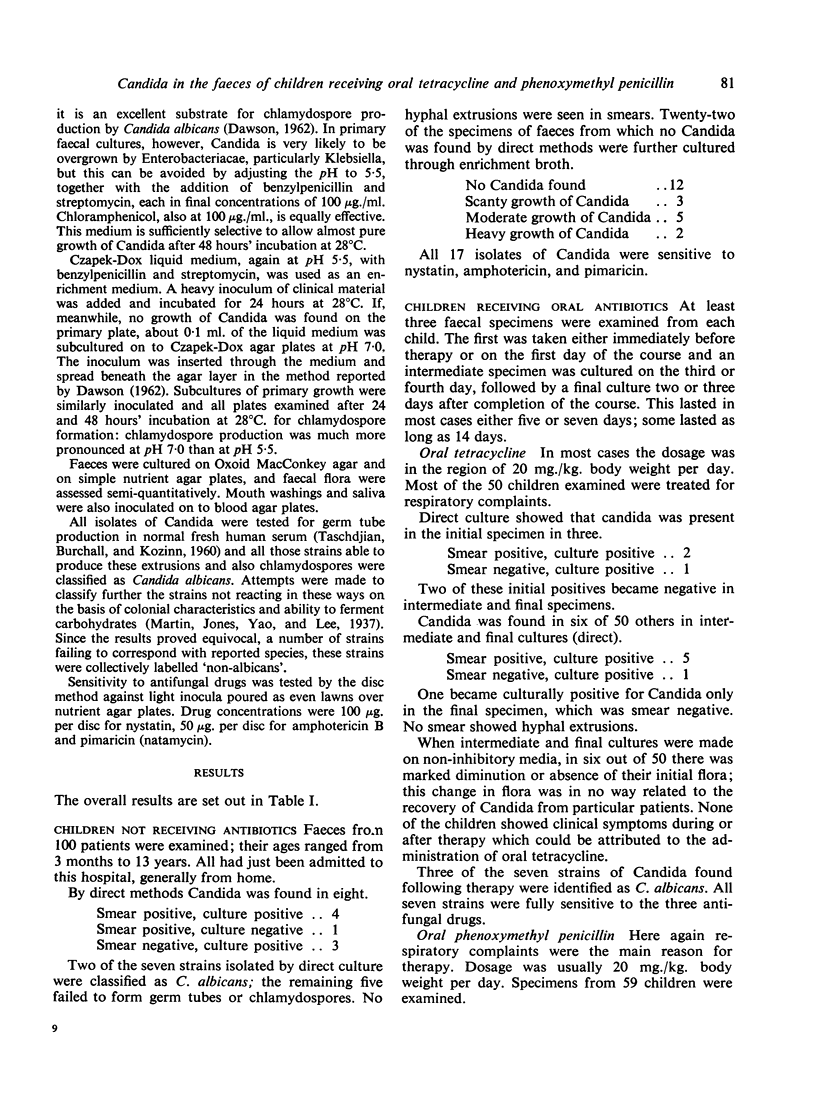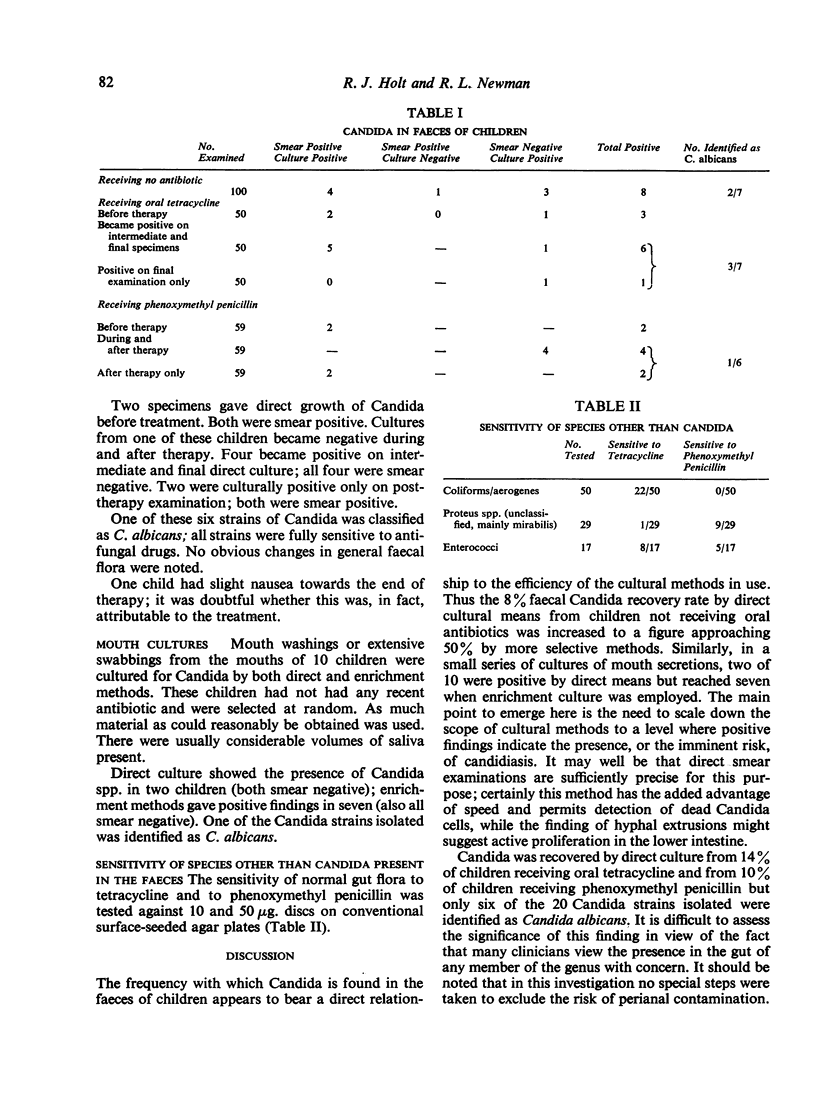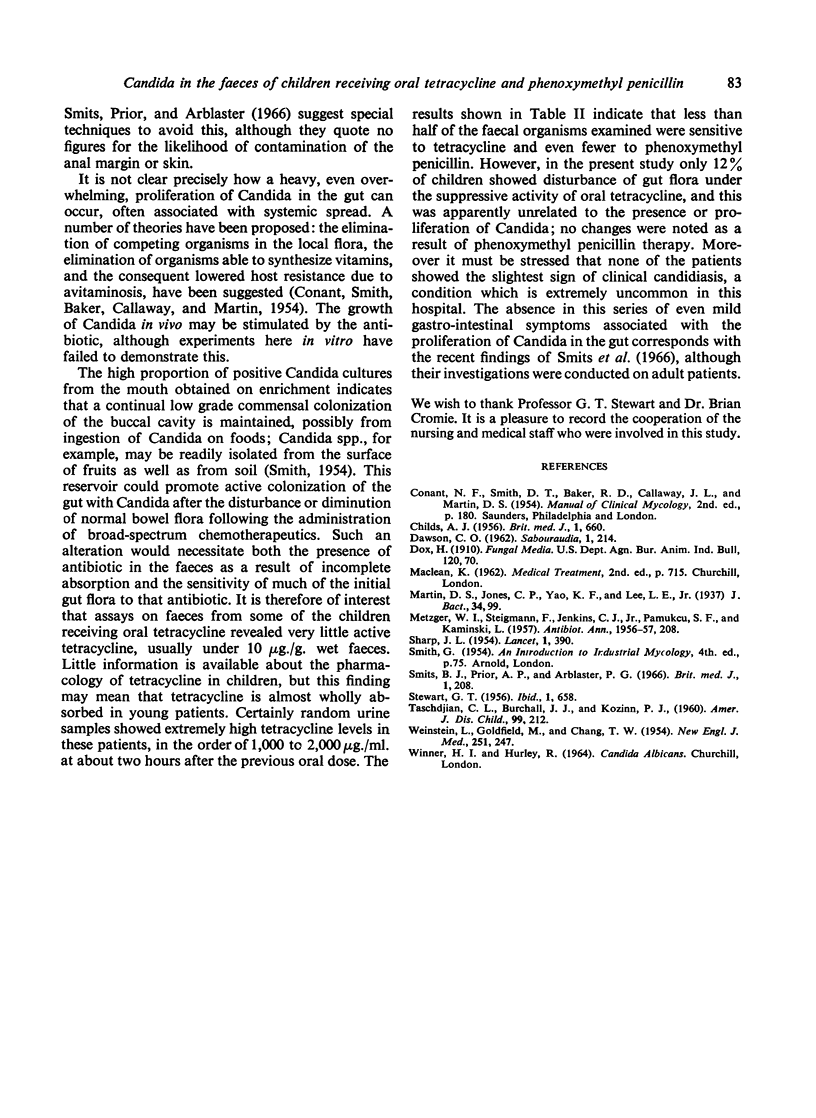Abstract
The faeces from 100 children under 14 years receiving no antibiotic or steroid therapy were examined for Candida spp. The proportion (8%) of positive isolates is compared with the number of Candida spp. isolated from the faces of 50 children receiving oral tetracycline (14%) and 59 children on phenoxymethyl penicillin (10%) for complaints other than gastrointestinal infections. The use of selective media is described and the significance of the greatly increased numbers of Candida spp. found by these methods is discussed.
In this series no clinical manifestations of candidiasis were observed, although slightly more Candida spp. were recovered from the two groups of children on oral antibiotics than from those not on such therapy. It is suggested that, in children at least, there is a need to re-assess the significance of the presence of Candida in the bowel during the administration of oral antibiotics. The almost complete absence of active tetracycline from the faeces and the small proportion of tetracycline-sensitive bowl organisms, coupled with the low incidence of change in bowel flora in these patients, suggest that this is not the reason for proliferation of Candida in the cases that do occasionally occur.
Full text
PDF



Selected References
These references are in PubMed. This may not be the complete list of references from this article.
- Childs A. J. Effect of Nystatin on Growth of Candida albicans During Antibiotic Therapy. Br Med J. 1956 Mar 24;1(4968):660–662. doi: 10.1136/bmj.1.4968.660. [DOI] [PMC free article] [PubMed] [Google Scholar]
- DAWSON C. O. Identification of Canda albicans in primary culture. Sabouraudia. 1962 Feb;1:214–219. [PubMed] [Google Scholar]
- METZGER W. I., STEIGMANN F., JENKINS C. J., Jr, PAMUKCU S. F., KAMINSKI L. Comparative effects of tetracycline alone and in combination with nystatin on the intestinal flora of man. Antibiot Annu. 1956:208–215. [PubMed] [Google Scholar]
- SHARP J. L. The growth of Candida albicans during antibiotic therapy. Lancet. 1954 Feb 20;266(6808):390–392. doi: 10.1016/s0140-6736(54)90928-9. [DOI] [PubMed] [Google Scholar]
- Smits B. J., Prior A. P., Arblaster P. G. Incidence of candida in hospital in-patients and the effects of antibiotic therapy. Br Med J. 1966 Jan 22;1(5481):208–210. doi: 10.1136/bmj.1.5481.208. [DOI] [PMC free article] [PubMed] [Google Scholar]
- Stewart G. T. Laboratory and Clinical Studies with Nystatin in Post-antibiotic Mycotic Infections. Br Med J. 1956 Mar 24;1(4968):658–660. doi: 10.1136/bmj.1.4968.658. [DOI] [PMC free article] [PubMed] [Google Scholar]
- TASCHDJIAN C. L., BURCHALL J. J., KOZINN P. J. Rapid identification of Candida albicans by filamentation on serum and serum substitutes. AMA J Dis Child. 1960 Feb;99:212–215. doi: 10.1001/archpedi.1960.02070030214011. [DOI] [PubMed] [Google Scholar]
- WEINSTEIN L., GOLDFIELD M., CHANG TE-WEN Infections occurring during chemotherapy; a study of their frequency, type and predisposing factors. N Engl J Med. 1954 Aug 12;251(7):247–255. doi: 10.1056/NEJM195408122510701. [DOI] [PubMed] [Google Scholar]


